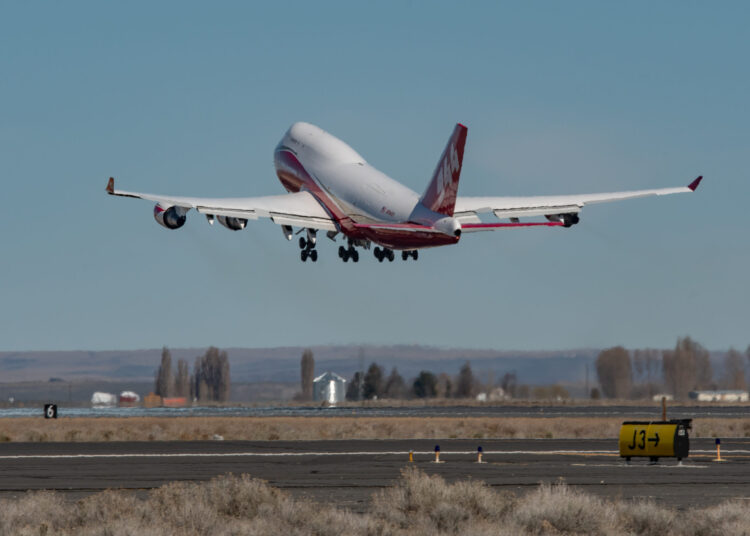Orlando-based National Airlines announced this week that it has acquired the Global SuperTanker and will be returning Tanker 944 back into cargo configuration to join the companies fleet of cargo aircraft that comprises of five Boeing 747-400 aircraft, a Boeing 757-200 and an A300-200.
After the shock announcement by ownership group Alterna Capital was made on April 26th of this year that the company would be shuttering Global SuperTanker operations just days before certification flights were to take place after the expiration of a fixed 10-year investment plan by the company.
The Global SuperTanker began operations as a passenger-carrying 747 for Japan Airlines, before being converted to a cargo aircraft before being sold to Evergreen International and then on to Global SuperTanker after the demise of Evergreen.
Global SuperTanker Services acquired the majority of Evergreen’s assets during the company’s insolvency, leading to the development of Tanker 944 (N944ST), a Boeing 747-400 previously owned by Japan Airlines as a cargo freighter. Conversion into the Global SuperTanker took place shortly after purchase, finally becoming the Spirit of John Muir, a nod to the man known as the “father of national parks” in the United States.
The Global SuperTanker would begin operations after certification by the FAA in September of 2016, fighting fires first abroad in Israel and Chile before gaining its first firefighting contract in the United States in California in 2017.
By 2019, the GSTS team had made significant enhancements to the SuperTanker drop system and conducted two months of successful missions in Bolivia. In 2020, further refinements to the drop system were completed, and GSTS was granted a “call when needed” contract by the U.S. Forest Service (USFS) for the first time. Additionally, California (CAL FIRE), Oregon, and Colorado “call when needed” contracts were awarded. In 2020, the GSTS strategy and technology upgrade progress was validated by mission assignments from both CAL FIRE and the USFS.”
Despite these successes, the financial belt-tightening of fire budgets after COVID may have signed the death knell for one of the most substantial air assets ever seen.
In an exclusive interview with AerialFire, Dan Reese spoke on his sadness not only on the demise of a project he and his team had poured their heart and souls into for so many years but his concern for the welfare of his staff. This included pilots, maintenance staff, and everyone else that had a hand in creating what was known throughout the world as a game-changing aircraft when it came to fighting fires.







